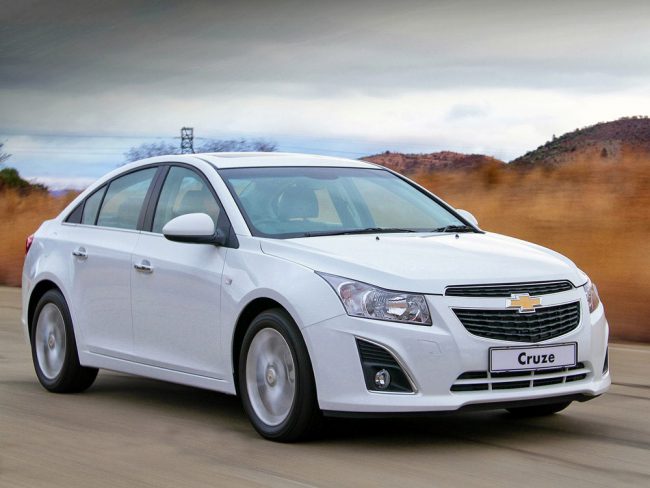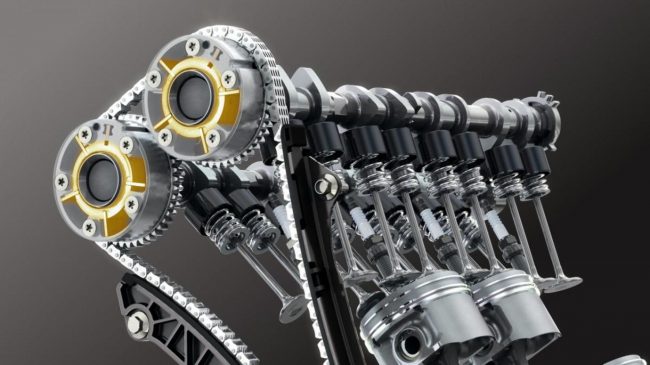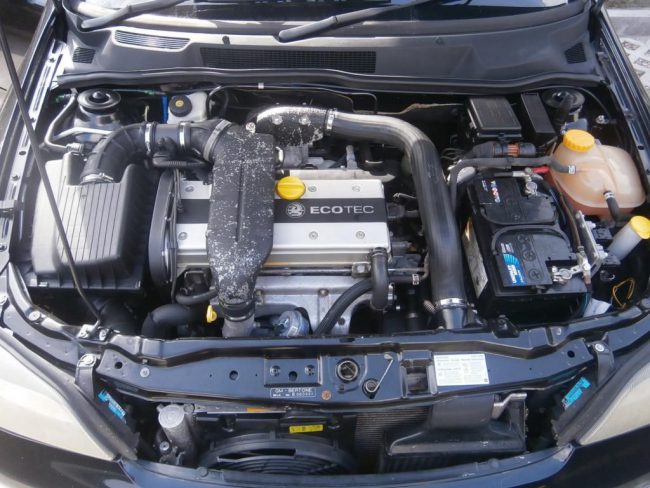
Chevrolet Cruze engines
Content
The Chevrolet Cruze model replaced the Chevrolet Lacetti and Chevrolet Cobalt. Produced from 2008 to 2015.
This is a great car that is loved by domestic motorists. Let's consider its technical features in more detail.
Model overview
As mentioned above, this model began to be produced in 2008, the Delta II became the platform for it. Opel Astra J was created on the same platform. Initially, production for the Russian market was established at the plant in Shushary, this is an enterprise created by GM. Later, when station wagons were added to the line, they were produced at the Avtotor plant, located in Kaliningrad.
 In our country, the model was implemented until 2015. After that, the launch of the second generation of the car was announced, and the first was discontinued. But, in practice, the second generation saw the light only in the USA and China, it did not reach our country. Further we will consider only the first generation Chevrolet Cruze.
In our country, the model was implemented until 2015. After that, the launch of the second generation of the car was announced, and the first was discontinued. But, in practice, the second generation saw the light only in the USA and China, it did not reach our country. Further we will consider only the first generation Chevrolet Cruze.
According to most motorists, this car has a high level of comfort, as well as reliability. There are several modifications, which allows you to choose the machine that best suits your needs.
engine Specifications
Several different powertrains were installed on the Chevrolet Cruze. They differ in technical characteristics, this allows you to choose a car based on the requirements of a particular driver. For convenience, we have summarized all the main indicators in a table.
| A14NET | F16D3 | F18D4 | Z18XER | M13A | |
|---|---|---|---|---|---|
| Engine displacement, cc | 1364 | 1598 | 1598 | 1796 | 1328 |
| Maximum torque, N * m (kg * m) at rpm. | 175(18)/3800 | 142 (14) / 4000 | 154 (16) / 4200 | 165 (17) to 4600 | 110 (11) to 4100 |
| 200(20)/4900 | 150 (15) / 3600 | 155 (16) / 4000 | 167 (17) to 3800 | 118 (12) to 3400 | |
| 150 (15) / 4000 | 170 (17) to 3800 | 118 (12) to 4000 | |||
| 118 (12) to 4400 | |||||
| Maximum power, hp | 140 | 109 | 115 – 124 | 122 – 125 | 85 – 94 |
| Maximum power, h.p. (kW) at rpm | 115(85)/5600 | 109 (80) / 5800 | 115 (85) / 6000 | 122 (90) to 5600 | 85 (63) to 6000 |
| 140 (103) / 4900 | 109 (80) / 6000 | 124 (91) / 6400 | 122 (90) to 6000 | 88 (65) to 6000 | |
| 140 (103) / 6000 | 125 (92) to 3800 | 91 (67) to 6000 | |||
| 140 (103) / 6300 | 125 (92) to 5600 | 93 (68) to 5800 | |||
| 125 (92) to 6000 | 94 (69) to 6000 | ||||
| Fuel used | Gas / petrol | Gasoline AI-92 | Gasoline AI-95 | Gasoline AI-92 | Regular (AI-92, AI-95) |
| Gasoline AI-95 | Gasoline AI-95 | Gasoline AI-95 | Gasoline AI-95 | ||
| Gasoline AI-98 | |||||
| Fuel consumption, l / 100 km | 5.9 – 8.8 | 6.6 – 9.3 | 6.6 – 7.1 | 7.9 – 10.1 | 5.9 – 7.9 |
| engine's type | Inline, 4-cylinder | 4-cylinder in-line | Inline, 4-cylinder | Inline, 4-cylinder | 4-cylinder, 16-valve, variable phase system (VVT) |
| CO2 emission in g / km | 123 – 257 | 172 – 178 | 153 – 167 | 185 – 211 | 174 – 184 |
| Add. engine information | multipoint fuel injection | multipoint fuel injection | multipoint fuel injection | multipoint fuel injection | DOHC 16-valve |
| Number of valves per cylinder | 4 | 4 | 4 | 4 | 4 |
| Cylinder diameter, mm | 72.5 | 79 | 80.5 | 80.5 | 78 |
| The piston stroke, mm | 82.6 | 81.5 | 88.2 | 88.2 | 69.5 |
| Compression ratio | 9.5 | 9.2 | 10.5 | 10.5 | 9.5 |
| Start-stop system | optional | No | Option | Option | No |
| Supercharger | Turbine | No | No | No | No |
| Out of resource. km. | 350 | 200-250 | 200-250 | 200-250 | 250 |
As you can see, technically all motors are quite diverse, this makes it possible to choose the most suitable options for a motorist.
At the moment, in accordance with the law, it is not necessary to check the number of the power plant when registering a car. But, sometimes it is still required, for example, when selecting certain types of parts. All engine models have a number stamped on the ebb of the cylinder head. You can see it right above the oil filter. Please note that it is prone to corrosion. This can lead to the destruction of the inscription. To avoid this, periodically inspect the site, clean it of rust, and lubricate with any grease.
Features of operation
 The engines installed on this car are quite hardy. They perfectly tolerate operation in harsh Russian conditions. Since the motors are different, maintenance and operation are somewhat different.
The engines installed on this car are quite hardy. They perfectly tolerate operation in harsh Russian conditions. Since the motors are different, maintenance and operation are somewhat different.
Below we will consider the main nuances of maintenance, as well as some typical engine malfunctions. This will help you avoid problems with the car.
Service
To begin with, it is worth considering the planned maintenance of the internal combustion engine. This is a mandatory procedure that ensures the normal operation of the engine. According to the manufacturer's recommendations, the minimum mileage between basic maintenance is 15 thousand kilometers. But, in practice, it is better to do it every 10 thousand, after all, operating conditions usually differ from ideal for the worse.
During basic maintenance, a visual inspection of all engine components is performed. Computer diagnostics are also mandatory. When defects are found, they are repaired. Also be sure to change the engine oil and filter. The following lubricants can be used for replacement.
| ICE model | Refueling volume l | Oil marking |
|---|---|---|
| F18D4 | 4.5 | 5W-30 |
| 5W-40 | ||
| 0W-30 (Regions with low temperature) | ||
| 0W-40(Low temperature regions) | ||
| Z18XER | 4.5 | 5W-30 |
| 5W-40 | ||
| 0W-30 (Regions with low temperature) | ||
| 0W-40 (Regions with low temperature) | ||
| A14NET | 4 | 5W-30 |
| M13A | 4 | 5W-30 |
| 10W-30 | ||
| 10W-40 | ||
| F16D3 | 3.75 | 5W30 |
| 5W40 | ||
| 10W30 | ||
| 0W40 |
According to dealer specifications, only synthetics are recommended. But, in the warm season, semi-synthetic oils can also be used.
To ensure the smooth operation of the ignition, the candles are changed every 30 thousand kilometers. If they are of high quality, then they serve all this time without any problems and failures.
Timing belt always requires increased attention. All motors except the M13A use a belt drive. Replace it on a run of 60 thousand, but sometimes it may be required earlier. To avoid trouble, check the condition of the belt regularly.
The M13A uses a timing chain drive. When used correctly, it is more reliable. As a rule, replacement is required after 150-200 thousand kilometers. Since by that time the motor was already quite worn out, the replacement of the timing drive was combined with a major overhaul of the power unit.
Typical malfunctions
Any motor has its drawbacks and malfunctions characteristic of it. This must be taken into account and the problems that arise should be addressed in a timely manner. Let's look at what difficulties the owners of the Chevrolet Cruze can face.
The main disadvantage of the A14NET is the insufficiently powerful turbine, it is also demanding on oil. If you fill it with low-quality grease, the risk of failure will increase. Also, do not constantly drive this engine at high speeds, this will also lead to premature "death" of the turbine and possibly the piston. There is also a problem characteristic of all Opel engines with leaking grease from under the valve cover. Quite often the pump bearing fails, it is worth replacing it.
On the Z18XER motor, the phase regulator sometimes fails, in which case the engine starts to rattle like a diesel engine. It is solved by replacing the solenoid valve, which is installed in the phase regulator, you can try to clean it from contamination. Another problem node here is the thermostat, it lasts no longer than 80 thousand kilometers, and in practice it often fails much earlier.
The problem of the F18D4 engine is the rapid wear of the main elements of the unit. Therefore, it has a relatively short service life. At the same time, minor breakdowns practically do not occur.
Considering the F16D3 power unit, one can generally note its reliability. But, at the same time, there may be problems with the failure of hydraulic valve compensators, they fail quite often. The engine also has a separate exhaust control system. This block also tends to fail regularly.
 The most reliable can be called M13A. This engine has a large margin of survivability, which saves the driver from many problems. If you properly care for it, breakdowns practically do not occur. Sometimes there may be a problem with the crankshaft position sensor, this is probably the most common malfunction of this motor. Also, when using low-quality fuel, the check lights up and a power system malfunction error appears.
The most reliable can be called M13A. This engine has a large margin of survivability, which saves the driver from many problems. If you properly care for it, breakdowns practically do not occur. Sometimes there may be a problem with the crankshaft position sensor, this is probably the most common malfunction of this motor. Also, when using low-quality fuel, the check lights up and a power system malfunction error appears.
Tuning
Many drivers do not like the standard characteristics of the motors, so many ways have been invented that help increase power or improve other engine performance. We will analyze the most suitable for each specific power unit.
For the A14NET engine, chip tuning is the best solution. Here it is most effective, since a turbine is used. With the correct flashing of the control unit, you can get a 10-20% increase in power. It makes no sense to do other improvements on this motor, the increase will be small, and the costs will be significant.
There are many more opportunities to refine the Z18XER motor, but here you need to remember that most of the work will cost a round sum. The simplest option is chip tuning, with it you can add about 10% power to the motor. If you want to get a more significant increase, you will need to install a turbine, as well as replace the connecting rod and piston group, and the cylinders are bored at the same time. This approach makes it possible to obtain power up to 200 hp. At the same time, you will need to put another gearbox, strengthen the brakes and suspension.
The F18D4 usually requires a fairly large tuning investment, and the results will be highly debatable. Here, even chip tuning does not work, in order to achieve an increase of 15%, you will need to replace the standard exhaust pants with a “spider”. For a greater effect, you should look towards the turbine, it gives the biggest increase in power. But, in addition to this, it is also desirable to install new parts of the connecting rod and piston group that are resistant to such loads. Otherwise, you will have to do a major overhaul of the engine very often.
The F16D3 engine is mainly accelerated by boring cylinders. This allows you to achieve increased power at minimal cost. At the same time, chip tuning is also required.
M13A is most often overclocked using chip tuning, but this does not give a proper increase in power, usually no more than 10 hp. It is more efficient to use short connecting rods, this gives a significant increase in engine volume, and, accordingly, more power is obtained. This option is the most efficient, but you have to pay for it with increased fuel consumption.
SWAPO
One of the popular tuning methods is SWAP, that is, a complete replacement of the engine. In practice, such refinement is complicated by the need to select an engine that fits the mounts, as well as to fit some standard units to the engine. Usually more powerful options are installed.
In fact, on the Chevrolet Cruze, such work is practically not carried out, the reason is the small number of suitable power units. Most often, they install z20let or 2.3 V5 AGZ. These motors require virtually no modifications, while they are quite powerful and reliable.
Most popular modifications
It is impossible to say unequivocally which of the versions of this car was the best. There are several reasons. First of all, at some points in time, only some modifications were supplied to the market, while others were almost not produced. Naturally, people took what the dealers offered them.
In general, if you look at the statistics, then most often they bought (or wanted to buy) a car with an F18D4 engine. According to many motorists, there is the most effective ratio of power and other parameters, in particular efficiency.
Which modification to choose
If you look at the reliability of the engine, it is best to purchase a car with an M13A engine. It was originally created for light SUVs, and there is an increased margin of safety. Therefore, if you do not want to mess around with regular minor malfunctions, this will be the best option.
The F18D4 is also sometimes praised. But, it is more suitable for country roads, due to its greater power and throttle response.

